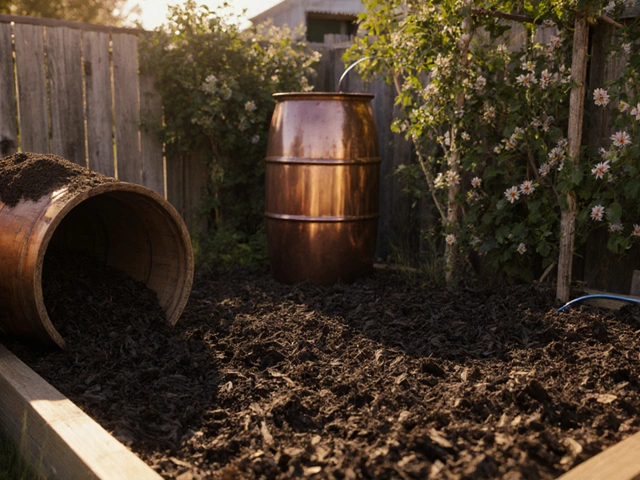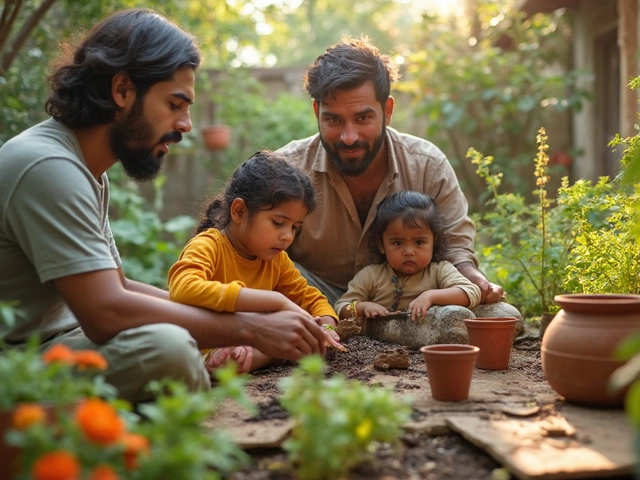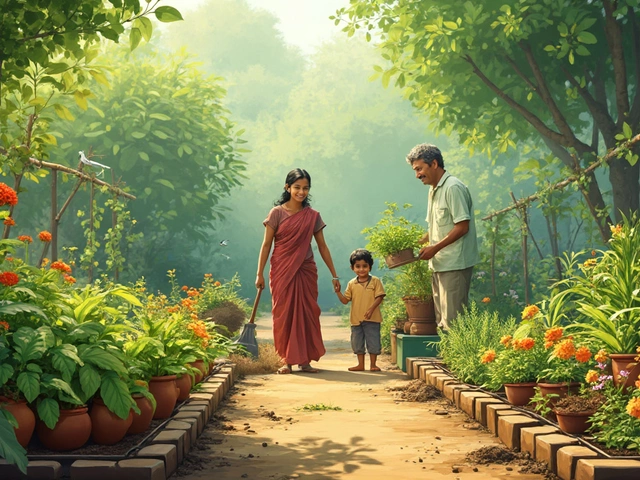Ever wonder if there’s actually one plant that deserves the title of “most sustainable”? Spoiler: it’s not a fancy rose or an Instagram-famous fiddle-leaf fig. Turns out, the most sustainable plants are the ones that give more than they take, work quietly behind the scenes, and basically do the hard work for us—like fixing soil, running without much water, or feeding pollinators on autopilot.
If you want your garden to thrive without constant watering, fertilizing, or fuss over the latest plant drama, focusing on sustainability just makes sense. Legumes like beans, peas, and clovers quietly add nitrogen to the soil, so they boost everything else growing nearby without you lifting a finger. Native plants pull double duty by handling your local weather like champs and giving local bees, birds, and butterflies their favorite snacks.
- Defining Plant Sustainability
- The Top Pick: Why Legumes Lead
- Honorable Mentions: Natives & Succulents
- How to Grow for Low Impact
- Maximizing Your Garden’s Eco Value
Defining Plant Sustainability
So what actually makes a plant “sustainable?” It really comes down to how much a plant gives back compared to what it takes. A sustainable plant needs very little from you but helps the garden, local wildlife, and the planet. Basically, it’s not just about looking nice—these plants work smart, not hard.
The easiest way to tell if a plant is truly sustainable? Check if it fits these boxes:
- Needs little water—think drought tolerant instead of sprinkler-hog.
- Grows well without loads of fertilizer, pesticides, or constant pruning.
- Supports pollinators or other helpful wildlife (like birds and butterflies).
- Doesn’t become invasive, take over, or push out local plants.
- Can handle your local weather, soil, and seasons with barely any drama.
For example, native plants are built for your area, so they barely need help once they’re in the ground. Legumes like beans or clover actually grab nitrogen from the air and fix it in the soil, making things better for everything growing around them. That’s the ultimate “give more than you take” move.
| Feature | Why It Matters |
|---|---|
| Drought Resistance | Cuts down water bills and saves resources |
| Low Fertilizer Needs | Less runoff and fewer chemicals in your yard |
| Wildlife Friendly | Keeps bees, butterflies, and birds coming back |
A lot of popular garden plants need special soil, tons of watering, and heavy pest control. Sustainable options just roll with what you’ve got. So when choosing plants for eco-friendly gardening, start by asking: will this one thrive on my worst day, not just my best?
The Top Pick: Why Legumes Lead
If someone pinned me down to choose one sustainable plant, I'd have to go with legumes. You’ll find beans, peas, clovers, and lentils in this family—and they do some wild things for the soil. Their roots host special bacteria that pull nitrogen straight from the air and lock it into the ground. That means you don’t need artificial fertilizers. Healthier soil, lower costs, fewer chemicals. Win-win-win.
What’s even better? Growing legumes makes your whole garden work smarter. After a season, the soil stays rich and ready for thirsty, hungry crops like tomatoes or corn. Here’s how legumes boost your garden:
- Free fertilizer: No more buying bags of chemical stuff. Legumes fix nitrogen naturally.
- Drought tolerance: Most legumes can handle dry spells better than your average crop.
- Support pollinators: Their flowers attract bees and butterflies, which help everything bloom.
- Low fuss: They barely need pampering and often crowd out weeds.
For an idea of just how much nitrogen a basic legume crop can add, check out this rough guide:
| Legume Type | Nitrogen Added (lbs/1000 sq. ft.) |
|---|---|
| Clovers | 2-7 |
| Vetch | 3-8 |
| Peas/Beans | 2-5 |
No fancy skills needed. If you can tuck a seed into soil, you can grow legumes and start reaping the eco benefits. Even if you’re working with a tiny yard or just a few pots, it counts. That’s why they always top the list of eco-friendly gardening choices.
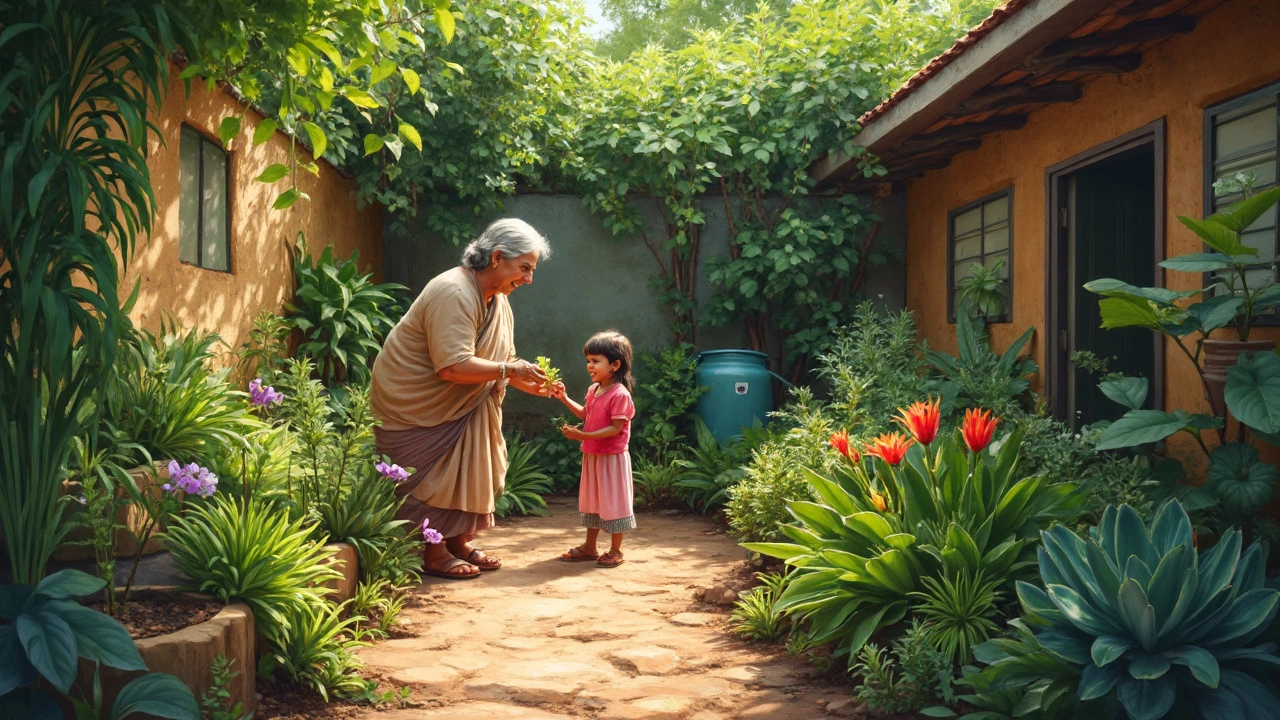
Honorable Mentions: Natives & Succulents
If you’re tired of wasting water, overfeeding, or constantly fighting pests, you’ll want native plants and succulents on your side. These green heroes are tough and efficient—they basically garden themselves once established. Native plants, by definition, already know your local climate like the back of their leaves. They attract native bees, butterflies, and birds, and usually need almost no extra attention. For example, purple coneflowers, California poppies, and black-eyed Susans are stars if you live in North America—they show off with minimal effort and bounce back after rough weather.
Why do succulents make the cut for sustainable plant choices? They store water in their leaves, surviving on little rainfall and barely any soil. Even if you forget to water, plants like jade, sedum, and agave just keep going. They’ve also become popular office and apartment plants for a reason—you can accidentally ignore them for weeks and they’ll still look good.
“Using native and drought-tolerant plants is one of the top ways people can make their yards more eco-friendly,” says the National Wildlife Federation. “You’ll cut down on water, fertilizer, and maintenance—plus, wildlife benefits.”
Planting native and succulent combos can really up your eco-friendly gardening game. Here’s where to start:
- Check your local extension office or botanical garden for lists of true native species.
- Mix in tough succulents for ground cover or pots in full sun spots.
- Avoid invasive species, even if they look pretty—natives will do more for pollinators and the soil.
- Let leaves and stems fall in fall, instead of tidying up—they provide shelter for insects and birds through winter.
According to a recent survey from the Sustainable Sites Initiative, yards using mostly natives and succulents required up to 70% less water than conventional lawns. That doesn’t just help the environment—it can save you a surprising chunk of money, especially if you live somewhere hot and dry. Focusing on drought tolerant plants and plants suited to your own region is one of the easiest sustainable wins you can score in any garden.
How to Grow for Low Impact
Growing for low impact isn’t just about picking the right sustainable plant; it’s how you garden that really stacks up. If you want your garden to be kind to the planet and easy on your wallet, these steps make all the difference.
- Skip the dig: No-dig gardening protects soil life, saves back pain, and holds on to carbon. Just lay compost or mulch right on top every season and let worms do their magic.
- Water smart: Mulching with straw, bark, or leaves keeps soil moist and roots happy. Drip irrigation systems use as much as 60% less water than sprinklers—especially useful for drought tolerant plants and anything you want to thrive without fuss.
- Plant densely: Close planting shades the soil and crowds out weeds. If you mix fast-growing beans with slower crops, everything gets a boost and you water less often.
- Select natives: Local plants use about 80% less water than non-natives and usually skip the pest problems. That means you don’t have to mess with chemical sprays.
- Bring in the good bugs: Pick flowers like yarrow and calendula, or perennial clover as a ground cover. These attract pollinators and natural pest fighters, so you have balance without any toxic stuff.
If you’re into data, check this out: native eco-friendly gardening with mulch can cut water use by half, according to a 2023 University of California urban gardening study. Here’s what they found:
| Practice | Annual Water Use (gallons/10 sq ft) |
|---|---|
| Grass Lawn, No Mulch | 500 |
| Native Plant Bed, With Mulch | 230 |
The lesson? A little mulch and the right sustainable plant choices go a long way.
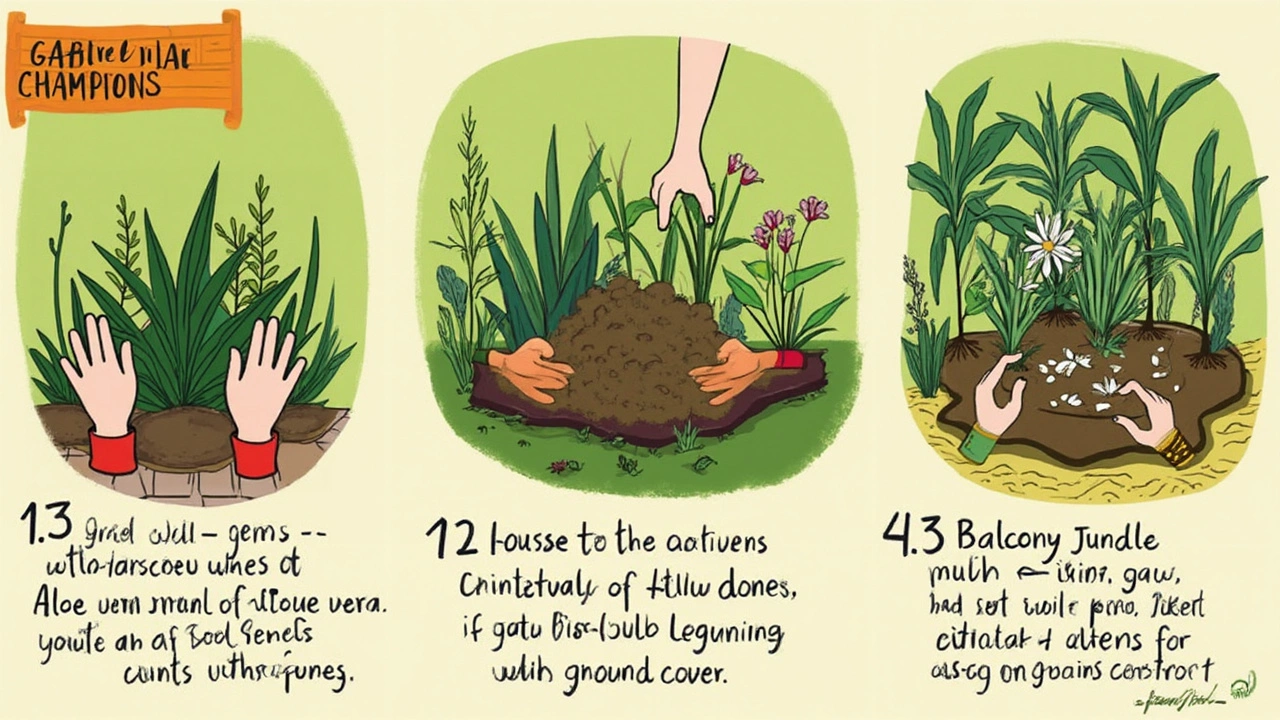
Maximizing Your Garden’s Eco Value
If you really want your garden to pull its weight for the planet, it’s all about working smarter, not harder. And the best part? You don’t need acres of land or a massive budget. Little tweaks with sustainable plant choices and habits actually add up way faster than you’d think.
Start by planting in layers—trees, shrubs, ground covers, and veggies all mixed together. This crowding action shades the soil, keeps weeds out, and helps the ground hold on to water. In my backyard, the peas and beans I plant between tomatoes not only boost the soil, but their overhead leaves actually help the tomatoes from frying in the summer heat.
Mulching is another trick that can make a huge difference. Just one thick layer of old leaves, shredded wood, or even straw will lock in moisture, keep the soil cooler, and stop so many weeds before they start. Mulched beds also break down over time, turning into compost right where you need it.
Shrinking your lawn is one of those simple changes that packs a punch. Typical grass lawns suck up a ton of water. Replacing even part of your lawn with drought tolerant plants or local natives means less irrigation and fewer chores. A patch of bee-friendly clover is not only tougher than grass, it gives pollinators a food source for months.
Composting isn’t just about tossing scraps. A simple bin or pile turns all those veggie peels and coffee grounds into black gold for your garden—meaning less waste in the landfill and nutrient-rich soil for your plants. It’s pretty wild how kitchen garbage like banana peels and eggshells can help a struggling tomato plant perk up.
- Mimic nature—let some wild patches grow for pollinators and birds.
- Pick perennial veggies and herbs; things that come back, like artichokes and chives, save you time and watering.
- Group plants by water needs for stress-free watering and less waste.
Want to see water use in context? Here’s a quick comparison of plant types and their typical needs:
| Plant Type | Water Needed (per week) |
|---|---|
| Grass Lawn | 1-1.5 inches |
| Legumes (beans/peas) | 0.5-1 inch |
| Native Succulents | 0.1-0.3 inch |
Stacking up these small moves not only keeps your space greener, it slashes time, water use, and money spent. And honestly, the more your garden does its own thing, the more you get to relax—and watch it all work.


